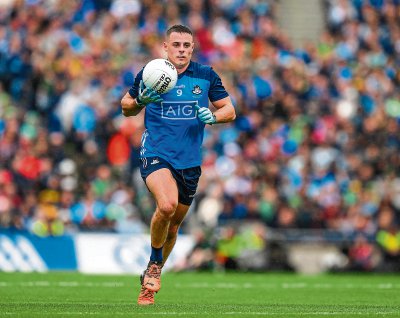THE kickout has changed so much tactically over the past thirty years. So much so, that the name has been changed along with it. From punting the ball out to the midfield areas where players would compete for the ball in 50/50 challenges to try and catch, break or attain possession; they have now evolved into tactical masterplans whereby players have set roles to ensure one player gets open for as close to a 100 per cent possession as possible.
The reason for this evolution, in my opinion, is from a realisation surrounding the ‘High Catch’ skill. After the GAA had invested heavily into coaching in the early 1990s, coaches began to realise that the high catch was becoming an ineffective skill but most certainly not obsolete, it still has its merits when used in the correct situation. Regarding kickouts, coaches realised that opposition would plan to fight for break ball rather than allow high fielding to take place.
Coaches then got to work and created ways their teams could gain 100 per cent possession with the minimal chance of interception from the opposition and kickout routines were born. Stephen Cluxton, who retained 100 per cent of his restarts in the All-Ireland final versus Kerry, has long been hailed as the man who has revolutionised this area of goalkeeping with his pin-point accuracy and coolness under pressure. It is a statement that cannot be denied on the surface. But delve deeper into this area and you will soon realise that it takes more than one man to perfect this ever-prominent area of the goalkeeping position.
Firstly, RESTARTS ARE RESTARTS, NOT KICKOUTS. By changing the jargon used, we also change the mind-set of the players involved because in the modern possession-based game, Restarts begin with a team in 100 per cent possession of the ball and aim to continue with 100 per cent possession once the restart has been taken.
The main objective of any Restart is to gain possession as far down the field as possible. The further downfield that a team gains possession from a restart, the less potential risk to their own goal, there is if the ball is turned over by the opposition and the further downfield, they win possession allows for a more favourable attacking position.
For me, there are three main components involved in Restarts. They are the three Rs which are Routines, Receivers and the Restarter.
Routines are the most important component and are the set of agreed movements/Principles that the team have discussed and decided upon. For each routine there will be specific roles for the players involved for each position that need to be learned by all players that could find themselves playing in that position. The team will also rehearse these Routines regularly at training, so everyone knows what their role is in each position both with and without opposition. When rehearsing these routines, two full teams are required for optimal results.
Receivers are the next component involved and they are the outfield players that want to receive the ball. It is important to note that it is the receivers that initiate the Restart with their movement and not the goalkeeper. The better the quantity and quality of the movement from receivers decreases the level of importance which is rested upon the Restarter with their kick. Receivers may also be held accountable for not executing a restart routine correctly.
Finally, the Restarter(the goalkeeper) is the last component of the Restart and can only execute the final stage of the Restart, which is to kick the ball. The Restarter must strive to have the strike taken within the least time possible. A Routine can be called if the Restart cannot be won immediately, but ultimately, it is the Restarter that is in control of when the ball is kicked, and he must decide upon the most viable option. If the first two components (Routines & Receivers) are ineffective, it raises the importance of the restarter’s kick. As the importance of the goalkeeper’s kick increases, the margin of error attached to the kick decreases which means there is then a higher amount of risk associated with the restart.
With restarts now having a massive focus in Gaelic football, it is important to consider the three components when coaching this area. All teams at all levels must have a set of restart routines that play to the strengths of the players on the team as well as the strengths of the goalkeeper. They must have set roles within them for the receivers to follow to ensure 100 per cent possession is won. Goalkeepers must practice/train meticulously in their distribution to ensure they complete their role with the three C’s (Calm, Controlled, Consistent) and the kick is executed using my C.R.A.F.T. (Consistency, Reading, Accuracy, Flight, Technique) method to ensure the most favourable result.
Gone are the days of the goalkeeper and midfielders being the only components of the kickout. Nowadays, they are now known as Restarts; and Restarts: They’re a Team Thing!!
Email: pmgoalkeeping@hotmail.com
Facebook: @MSoG11
Twitter: @MorSchGk
Receive quality journalism wherever you are, on any device. Keep up to date from the comfort of your own home with a digital subscription.
Any time | Any place | Anywhere












